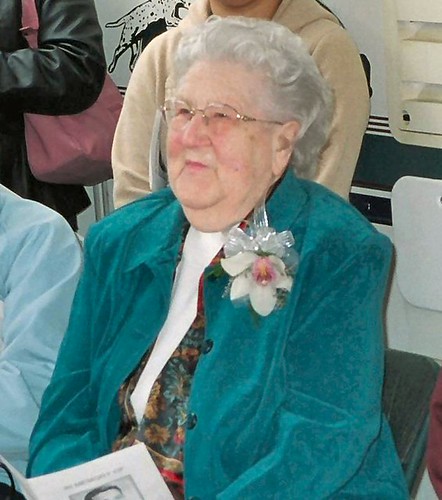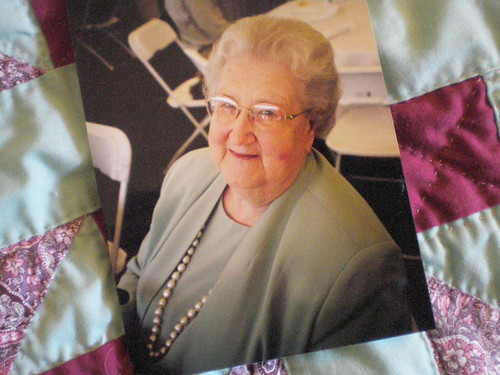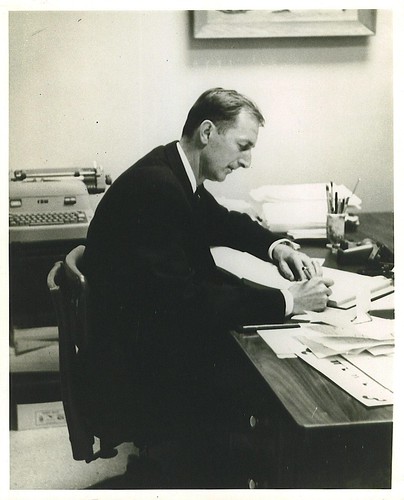 Lieutenant Nicholas Snowden was the last in our branch of the Snowden line to be born (7 Apr 1828) at Montpelier Mansion in Laurel, MD. He was a graduate of Georgetown University and enlisted in the Confederate army in 1861. Nicholas served in the Ist MD Infantry, Company D and fought in the First Battle of Manassas. In the Battle of Harrisonburg, he charged into gunfire from Yankee troops concealed behind a fence. He fell pierced by three balls and died in the arms of his cousin Capt. James R. Herbert. The date was June 6, 1862. General Jackson posthumously awarded Nicholas the rank of Major for his valor in battle. He was briefly buried next to the Harrisonburg road and then interred at Union Church Cemetery in Cross Keys, VA. In 1884 his body and tombstone were transferred to Loudon Park Cemetery in Baltimore, MD, to the Confederate Hill section.
Lieutenant Nicholas Snowden was the last in our branch of the Snowden line to be born (7 Apr 1828) at Montpelier Mansion in Laurel, MD. He was a graduate of Georgetown University and enlisted in the Confederate army in 1861. Nicholas served in the Ist MD Infantry, Company D and fought in the First Battle of Manassas. In the Battle of Harrisonburg, he charged into gunfire from Yankee troops concealed behind a fence. He fell pierced by three balls and died in the arms of his cousin Capt. James R. Herbert. The date was June 6, 1862. General Jackson posthumously awarded Nicholas the rank of Major for his valor in battle. He was briefly buried next to the Harrisonburg road and then interred at Union Church Cemetery in Cross Keys, VA. In 1884 his body and tombstone were transferred to Loudon Park Cemetery in Baltimore, MD, to the Confederate Hill section.
There are several historical markers that commemorate the Battle of Harrisonburg. I borrowed a map from Google Maps and indicated the locations of three of the relevant markers. You will note that all three of the sites are related to the place of death of General Turner Ashby. It is doubtful that we would be able to determine the place where Nicholas died with any certainty. But we do know that he was fighting under Ashby, that they both perished in this battle, and that Nicholas was temporarily buried near the Harrisonburg road (present day Route 11). So we can infer that Lt. Nicholas Snowden met his death in the vicinity of the triangle made by the three historical markers, just south of the present day campus of James Madison University. Since the battle map shows the Ist Maryland at the south end of the Confederate line, perhaps Lt. Nicholas Snowden was fighting closer to Port Republic Road. A-30 - Located on Route 11 (S. Main Street) Harrisonburg, VA, between Edgelawn Drive and Port Republic Road. This marker indicates that General Turner Ashby, the "Black Knight," fell 1.5 miles east of the marker site, on Chestnut Ridge. The text of the marker reads:
"Where Ashby Fell. A mile and a half east of this point, Turner Ashby, Stonewall Jackson's cavalry commander, was killed, June 6, 1862, while opposing Fremont's advance."A-35 - Located on Route 11 (S. Main Street) in Harrisonburg, VA, between Miller Circle and Rocco Drive, near the railroad crossing. The text of the marker reads:
"End of the Campaign. Here Stonewall Jackson, retreating up the Valley before the converging columns of Fremont and Shields, turned at bay, June, 1862. A mile southeast Jackson's cavalry commander, Ashby, was killed, June 6. At Cross Keys, six miles southeast, Ewell of Jackson's army defeated Fremont, June 8. Near Port Republic, ten miles southeast, Jackson defeated Shields, June 9. This was the end of Jackson's Valley Campaign." Chestnut Ridge
Chestnut Ridge -
Located on Turner Ashby Lane, off of Neff Avenue (as direct access from Port Republic Road has been closed). The text of the marker reads:"Chestnut Ridge - Death of Ashby - 1862 Valley Campaign. On June 6, 1862, the vanguard of Union Gen. John C. Frémont’s force, pursuing Confederate Gen. Thomas J. 'Stonewall' Jackson’s army south up the Shenandoah Valley, reached this point near Harrisonburg. Jackson’s rear guard, led by Gen. Turner Ashby, engaged Federal cavalry here and captured Col. Sir Percy Wyndham, the English commander of the 1st New Jersey Cavalry who had earlier boasted that he would 'bag Ashby.' The 1st Maryland Inf. and 58th Virginia Inf. set an ambush for the Federals. At about 6 p.m., however, Union forces appeared not in the road as expected, but in a concealed position near Ashby’s force. When Ashby’s horse was shot from under him, he rolled off the mount, regained his footing and ordered his men to stop shooting and use the bayonet, shouting, 'Charge, men! For God’s sake charge!' Then a Union bullet pierced Ashby’s side and passed through his chest. He fell dead while his men cleared the Federals from the woodline. The next day, Ashby’s body lay in state in the Frank Kemper house in Port Republic, where a brief funeral service was held. Jackson viewed the body there in private. Although Ashby’s lack of discipline had drawn Jackson’s sharp rebuke two months earlier, he later praised Ashby. 'As a partisan officer I never knew his superior,' Jackson wrote. 'His daring was proverbial ... his tone of character heroic, and his sagacity almost intuitive in divining the purposes of the enemy.'"
 Ashby's forces were defending Jackson's progress from the rear and did battle with Fremont's cavalry led by General George Bayard. Among that Yankee force were the Ist Pennsylvania Rifles, Company B (a.k.a. the Bucktails, the Morgan Rifles, Kane's Rifle Regiment, 13th Pennsylvania Reserve, etc.). The Bucktails claim credit for felling Turner Ashby after his horse was killed and he continued to do battle on foot, although contemporary accounts also claim that Ashby was a victim of friendly fire. The Bucktails history website features an excerpt from the Southern Historical Society Papers called the Fight with the Bucktails, which I have reproduced here in full. It appears to have been composed by General Bradley Tyler Johnson for the Southern Historical Society Papers 10 (1882: Jan/Dec) 103. The emphasis is my addition to highlight portions that refer directly to Lt. Nicholas Snowden.
Ashby's forces were defending Jackson's progress from the rear and did battle with Fremont's cavalry led by General George Bayard. Among that Yankee force were the Ist Pennsylvania Rifles, Company B (a.k.a. the Bucktails, the Morgan Rifles, Kane's Rifle Regiment, 13th Pennsylvania Reserve, etc.). The Bucktails claim credit for felling Turner Ashby after his horse was killed and he continued to do battle on foot, although contemporary accounts also claim that Ashby was a victim of friendly fire. The Bucktails history website features an excerpt from the Southern Historical Society Papers called the Fight with the Bucktails, which I have reproduced here in full. It appears to have been composed by General Bradley Tyler Johnson for the Southern Historical Society Papers 10 (1882: Jan/Dec) 103. The emphasis is my addition to highlight portions that refer directly to Lt. Nicholas Snowden.Memoirs of the First Maryland Regiment
FIGHT WITH THE BUCKTAILS
On the evening of the 5th of June we arrived early at Harrisonburg, and leaving the Valley road turned to the left and went into camp. For the last two days we had been marching leisurely along closing up stragglers, and feeding the horses and men pretty well with the provisions the country afforded.
Fremont had been very pertinacious, and was continually on our rear. From Strasburg up, the artillery---either of the pursuer or pursued---sounded continually in our ears from day-light until dark. But as we diminished our pace he slackened his, and indicated that though eager to strike a flying foe, he was not so well prepared to fight one which faced him. Since leaving New Market, such had been our attitude, willingness to fight him whenever the position suited us. On Friday morning, June 6th, we marched late.
General Steuart had been relieved of his cavalry command and returned to the " Maryland line," consisting of the regiment, the Baltimore Light Artillery, Captain Brockenbrough, and Captain Brown's cavalry company, which had joined us just after the fight at Winchester. He had also assigned to him the Fifty-eighth, Forty-fourth, and two other Virginia regiments.
That morning being the rear-guard we were late starting, and delayed by the enormous trains which were carrying off the plunder of the expedition, by the afternoon we had not marched more than three miles. The head of this column was then at Fort Republic, five miles distant, where a bridge spans the Shenandoah. While the cavalry under
Ashby had dismounted, during one of those numerous halts, which render the movement of a long column so tiresome, a regiment of Yankee cavalry suddenly dashed through them. Quick as the Yankees were, however, they were not quick enough for Ashby, who instantly formed and charged, routing them totally, and capturing prisoners and horses.
Among his prizes was Sir Percy Wyndham--an itinerant Englishman-a soldier of fortune, who though without rank or position at home, had served in the Italian campaign of Garibaldi, and was a man of gallantry and courage. He was eagerly caught up by the Lincoln Government, when personal courage and dash were at a premium, made Colonel of cavalry, and sent off to the Valley to meet Ashby. His only interview with the Virginia Cavalier was when he was riding bareheaded behind one of Ashby’s troopers---a prisoner. He expressed profound disgust at the arrant cowardice of his men, to which he attributed his whole disaster. As soon as Ashby chased the remnants of the Yankees back he returned, and reported to
General Ewell that he had discovered an infantry force coming rapidly on us, and showed him that by a quick detour through the woods he could strike them in flank. Ewell, delighted at the prospect, ordered Steuart's command back at once. The regiment in the order of march in the morning had been last. In thus reversing the direction it should have been first, but having been placed to support a battery, two Virginia regiments got ahead of us. The Colonel however soon managed to cut in. and got up next to the Fifty-eighth Virginia. Ewell and Ashby rode at the head of the column---the latter explaining to the former the nature of the ground, the position of the roads, and the direction of the enemy. Though too far off to hear what he said, his dark face was lit up in a blaze of enthusiasm, and his eloquent gesticulation indicated his meaning as intelligibly as words. "Look at Ashby," said the Colonel to the Adjutant, "see how happy be is!" In a few moments we entered a thick wood, then changed direction in line of battle. Companies D and G of the regiment out as skirmishers under Ashby's immediate command. Moving cautiously along, in the quiet woods, every sound was exaggerated in the stillness, and at last without a moment's warning the Fifty-eighth gave way and ran back. " Steady there men, steady First Maryland," shouted our Colonel as pistol in hand he headed the broken mass. " Form behind there!" pointing to our solid ranks. The panic was only momentary, one of those strange accidents which occur in battle, and almost immediately the Fifty-eighth re-formed and went on. In a minute the sputter of the skirmishers was heard immediately followed by the volley of the Fifty-eighth. "Charge, Colonel." cried General Ewell, who was just by us---" charge men," said Colonel Johnson, and down the hill we went with a cheer, in a run. But we found no enemy. The fire on our right was excessive we were made to lie down, but balls began exploding and smacking among the men on the rocks. "Those Virginians are killing our men." Off galloped General Ewell and the Colonel, both to stop the firing, but directly returned finding out they were Yankee bullets. " I see one, Colonel can I kill him," cried Southoron of Company H. Assent was given, and he pulled away, but his cap snapped. Coolly putting on another he fired. "There I've killed you," said he. "Let us charge them, let us charge them, Colonel," came from several. " Very' well," said he. "Up men, forward, file right, march"-and as soon as the colors came into line, " By the right flank charge!!!” in a voice that could be heard far above the crash of small arms. The right companies and colors went in on a run, the left companies catching up, they closed with the Bucktails, who were strongly posted behind a worm fence full of undergrowth and briars, and drove them out, and as they ran across the open field, poured a most deadly fire into them, which melted them away like frost before the sun.
We afterwards heard that of over 200 Bucktails who went into that fight only fifty came out. After driving them off, a brigade of infantry was seen a short distance off, and a six-gun battery of brass pieces with an apparently large force of cavalry. They had had enough though for the evening, and it only being General Ewell's instruction to check
Fremont sharply, he retired. The fight, short as it was, had cost us dearly. Ashby's horse fell at the first fire, immediately jumping to his feet, he half turned round to the Fifty-eighth, in front of whose second company he was brandishing his right hand with his pistol, ordering them to charge. The confusion was such that they did not obey him, and he fell, a ball entering his right side just above his hip and passing diagonally upward, came out under his left arm, showing that the ball was fired by someone lying down. Though in front of the Fifty-eighth, he was not more than thirty yards from the enemy, who were lying flat behind the fence. The opinion of Lieutenant Booth, who saw him fall and was closer to him than anyone, is that a shot from the Yankees killed him. We lost Captain Michael S. Robertson, Company I, killed instantly; as he fell, he said, " Go on, boys, don't mind me." He was a native and resident of Charles County, one of our oldest families---wealthy and highly educated.
At the same time fell Lieutenant Nicholas Snowden, Company D, from Prince George of that well known family. At the time of the Baltimore outbreak he a cavalry company, which he immediately put under arms until, like so many others, he found Hicks had betrayed the State, and he came to Virginia. No braver, or more gallant gentlemen than these have died for Southern Independence. With them fell six or eight more dead, Color-Sergeant Doyle was shot down, Color-Corporal Taylor caught the colors, but soon went down, the next Corporal to him caught them, but instantly falling, Corporal Shanks, Company H, seized them, lifting them arms length above his head, carried them safely through the fight.
Colonel Johnson had been that afternoon to see
General Jackson, and was in full uniform, rather an unusual sight in that army where few officers wore any sign of rank. As the regiment charged, his horse was shot in the shoulder; then directly received in his forehead a ball, intended for his rider, and as he fell, another in the pommel of the saddle. His uniform doubtless procured him these compliments, as he was not more than thirty yards from the Bucktails. Captain Nicholas, Company “G,”- found Lieutenant-Colonel Kane, their commander, sitting on a stump with a broken leg, who invoked the Captain to shoot the cowardly hounds who had run off and left him. Although this fight was quickly over, it was one of the bloodiest of the war, considering the time and number engaged. Our loss was about one hundred killed and wounded, and that of the enemy probably one hundred and fifty in all, including prisoners, of whom there were very few.
Dr. Johnson, the surgeon of the First Maryland, the next morning had Lieutenant Snowden buried near the Harrisonburg road, and his company buried Captain Robertson in Union church-yard by the brick wall opposite the gate the first church on the road from Harrisonburg to Port Republic. Feelings of sorrow at the loss of so many friends strongly impressed us all, and Saturday was quietly spent in taking position and going into camp near the Shenandoah. General Jackson had the day before directed the Colonel to pick out a good camp and recruit his men. " Drill them four hours a day," said he. Friday evening we had one drill, which has just been described. Fate had reserved such another in store for us.































 This photograph and text about Reuben Brigham is part of an exhibit at the museum. Reuben and David J. Lewis worked together on the Parcel Post bill.
This photograph and text about Reuben Brigham is part of an exhibit at the museum. Reuben and David J. Lewis worked together on the Parcel Post bill.





